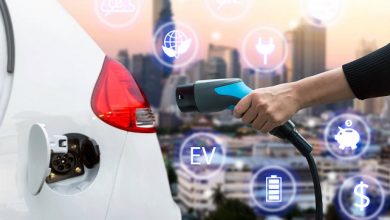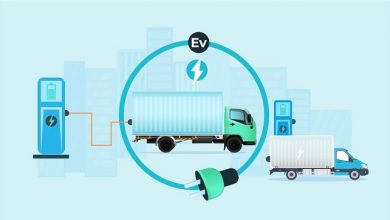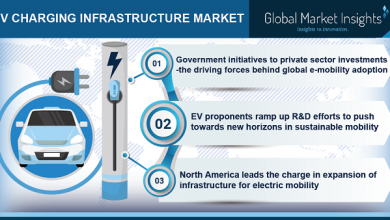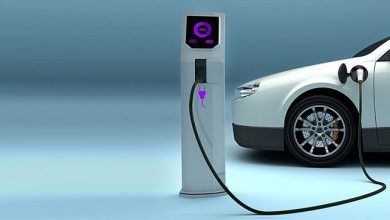EV Charging Infra – Market scope and Future Direction with B2B segment

EV penetration is skyrocketing in western and European countries by the passing time, India is also gearing up in the EV market but still, we are lacking to catch up with the pace of other developed countries in EV adoption. Despite having many provoking reasons for customers to adopt electric mobility many barriers come along with it which are decelerating the EV adoption. Barriers like large population, low public infrastructure, less awareness and myths, and heterogeneous development in urban areas contribute the most in slowing down EV adoption.
The EV charging market in India is mainly captured by the charging stations and power supply organizations that supply the power to charge electric and hybrid electric vehicles.
As the passing time, the technology is overpowering all industries also in the global Electric vehicle industry the technological approach gave the best results for upscaling the electric vehicle industry. Following the same the stations can cater to all the standard requirements like (Smart Plug, Bharat AC001, DC001 (GB/T), CHAdeMO, and CCS2) to EV users on a common board.)
Right now, in India, the majority of charging station services are either provided by private companies or by government bodies. But as per the upcoming forecasted demand of electric vehicles and it is charging infrastructure these inputs won’t be sufficient to cater to the demands of electric vehicle owners/users and we need one another hand to make India’s EV charging infrastructure purely user friendly. Another hand is of community EV charging providers.
As charging an electric vehicle requires at least 1-2 hours of nonstop charging and therefore more no. of charging stations will be required to cater to the demand especially at community places like Hotels, resorts, business places, and many other places. To fill this gap the community site owners, need to actively participate and contribute to making the Indian electric vehicle industry stronger.
Responding to the proactive approach of the policymakers, the electric mobility market has witnessed strategic partnerships between the various players of the EV supply chain. This has been done with dual objectives of diversifying product portfolio and reducing operational risks thereby increasing the readiness of the industry to respond to the electric mobility disruption.
Market Potential based on Charging usage
We at E-Fill have explored synergies with all possible categories of B2B clients where we have installed all kinds of chargers for private & public for a particular use case & application. As the EV market grows with the expected CAGR, more companies on EV Fleets, Cooperates, Mall & societies will also start getting EV ready as per govt ongoing & upcoming mandates to support Green & clean ecosystem, will start entering in this and would require a complete EV Ecosystem which E-Fill has already built & perfect over time.
Rebuilding the customer’s habit and flow of using mobility will be a major challenge to construct a fail-proof EV eco-system. And as EVs are inevitable customers are going to see a radical change. Driven by a decrease in ownership and the emergence of autonomous cars, the mobility revolution is at our doorstep, waiting to become part of our daily lives. The shared autonomous electric vehicles are no more alien words to anyone. Thus, it’s very important to understand how customers will embed this new mobility mode into their life. Because the growth of any industry is depending upon the response of their customers and especially the growth of the EV industry is highly dependent upon the mobility user’s response we identified and divided the whole charging station scenario into four options depending upon the various mobility use cases.
The future
Now talking about the future of electric mobility, it’ll highly depend upon these 3 factors i.e., technology, government regulations, and customer experience. Let decode all the 3 factors in detail:
Technology: Tech acts as a building pillar for any organization/sector to scale up and nonetheless in the EV ecosystem – like charging stations, electric mobility advancement, and sustainable energy sources to power electric vehicles.
Government incentives and regulation: As seen from the case study of a few countries which are many years ahead of India in terms of EV penetration it’s observed that government incentives and regulation contributed a lot to EV adoption in that country.
Also, we can see the rise in EV adoption in India right after the rollout of the fame-II subsidy started. Without government incentives, both businesses and customers won’t show any interest in adopting electric vehicles.
Customer experience: “Customer is the king” this famous quote has a specialty that fits in all types of business and markets. Similarly, for the EV industry, these analyses give a brief of the success rate of implementing any new strategy or technology in the EV industry.
The revolution in the auto industry comes with many challenges and one of the most profound ones of them is changing the habit. There is no other way and customers have to change their ongoing mobility to adopt electric mobility.
We at E-Fill Electric as an Ecosystem provider Working with real-estate, builder, parking solution companies, mall, Cab fleets believe the future of the EV is more realistic & promising.
Author:

Mayank Jain
Founder & CEO
E-Fill Electric
Mayank Jain, the founder & CEO of a young technology-driven start-up began his journey of Entrepreneurship after working for more than 8 years in automobile R&Ds. Mayank is a passionate innovator turned Entrepreneur with having filed 6 Patents, one design application and few research papers.
Published in Telematics Wire





